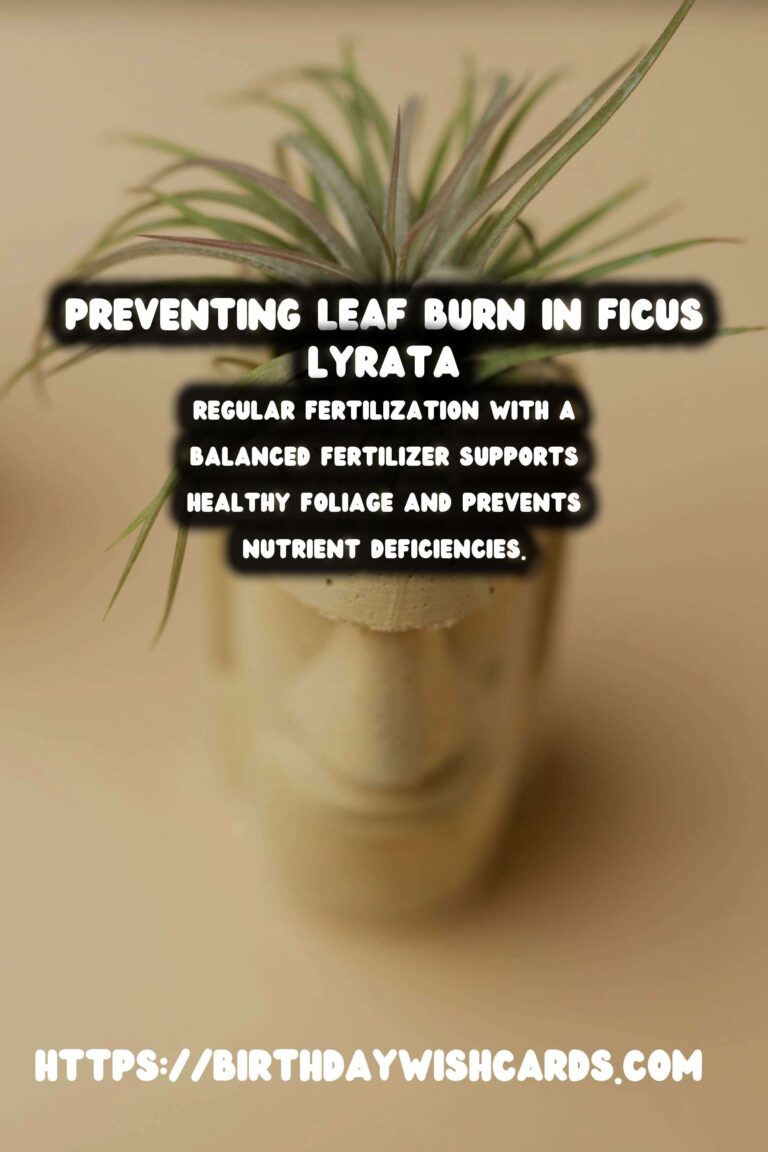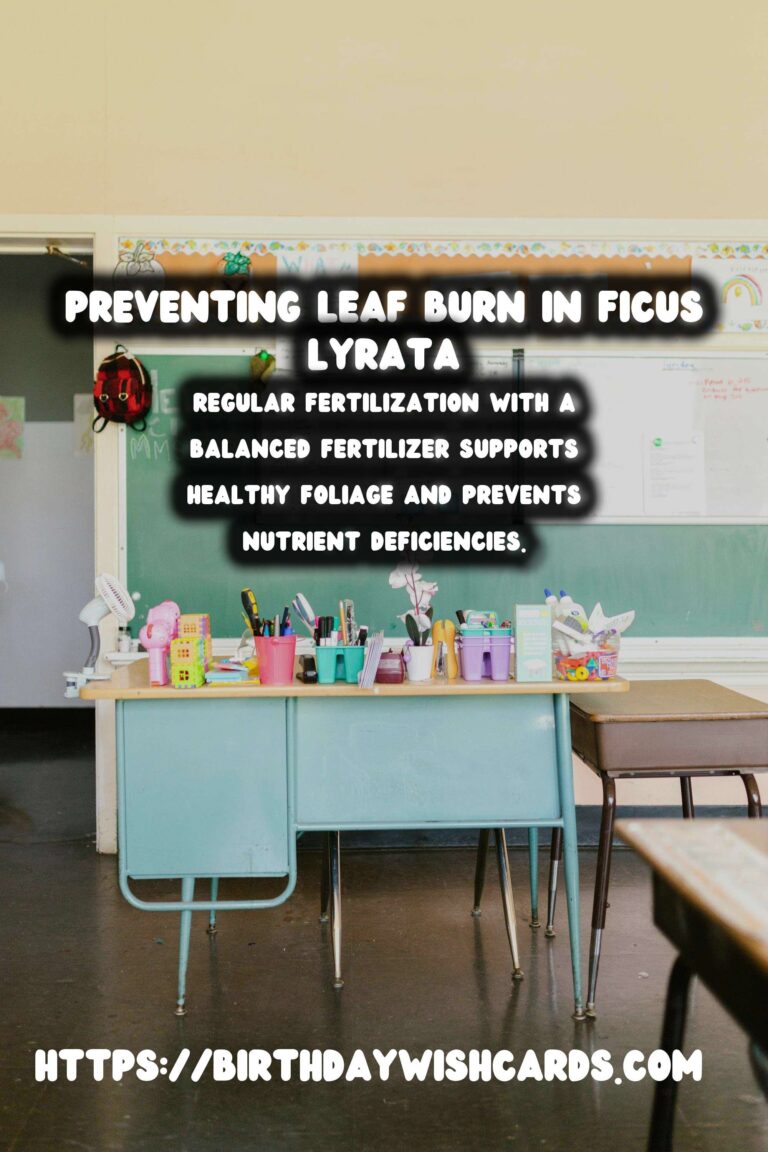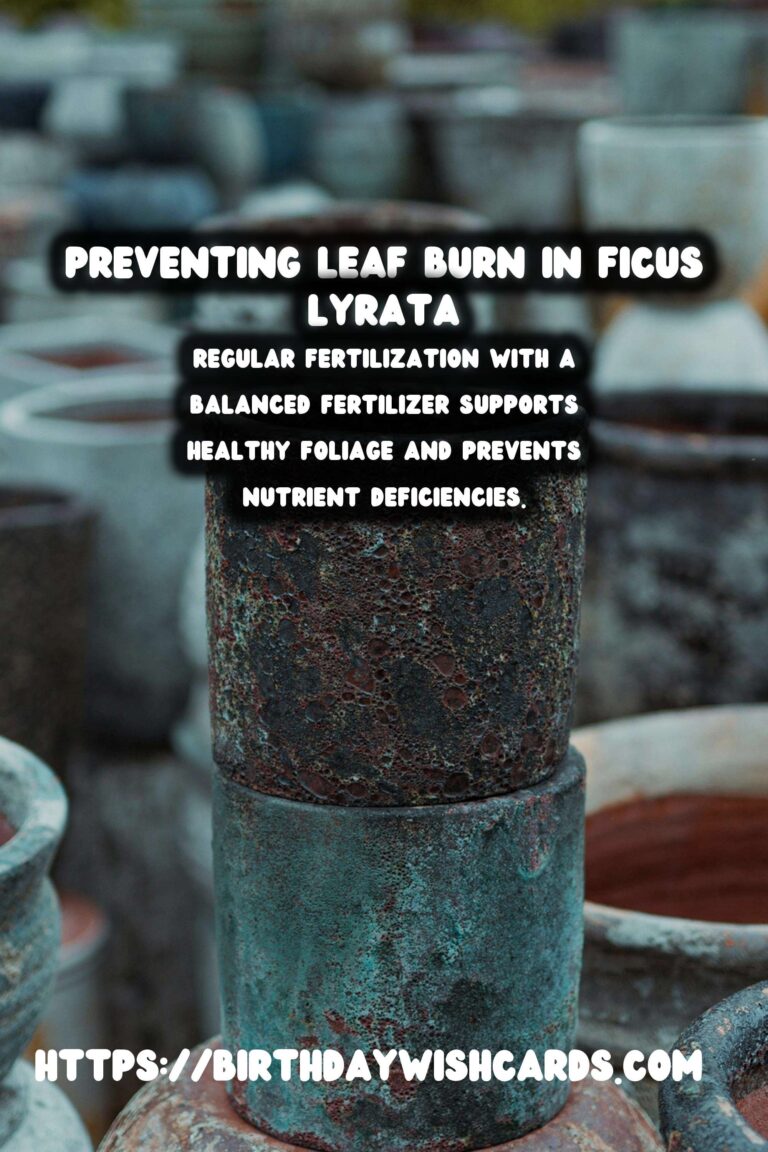
The Ficus Lyrata, commonly known as the fiddle leaf fig, is a popular houseplant known for its large, dramatic leaves and striking appearance. While it can be a stunning addition to any indoor space, it requires specific care to prevent common issues such as leaf burn. Leaf burn is a condition where the leaves develop brown edges or spots, often due to environmental stressors. Understanding the causes and prevention methods for leaf burn will help keep your Ficus Lyrata healthy and vibrant.
Understanding the Causes of Leaf Burn
Leaf burn in Ficus Lyrata can be attributed to several factors, including excessive sunlight, improper watering, low humidity, and nutrient deficiencies. Identifying the root cause is essential for effective prevention.
Excessive Sunlight
Fiddle leaf figs require bright, indirect light. Direct sunlight can scorch the leaves, leading to leaf burn. It is crucial to place your Ficus Lyrata in a location where it receives plenty of light without being directly exposed to the sun’s harsh rays.
Improper Watering
Both overwatering and underwatering can cause leaf burn. Overwatering leads to root rot, while underwatering results in dehydration, both of which harm the plant’s leaves. It is essential to maintain a consistent watering schedule, allowing the top inch of soil to dry out between waterings.
Low Humidity
Ficus Lyrata thrive in environments with higher humidity. Low humidity levels can cause the edges of the leaves to dry out and turn brown. Increasing humidity around the plant, using a humidifier or a pebble tray, can help prevent this issue.
Nutrient Deficiencies
A lack of essential nutrients can also lead to leaf burn. Regularly fertilizing the plant with a balanced fertilizer during its growing season can provide the necessary nutrients to maintain healthy foliage.
Prevention Techniques for Leaf Burn
To prevent leaf burn in your Ficus Lyrata, consider implementing the following techniques:
Proper Placement
Ensure your plant is placed in a well-lit area with indirect sunlight. If necessary, use sheer curtains to filter the sunlight.
Consistent Watering Schedule
Develop a watering routine that allows the soil to partially dry out between waterings. Monitor the soil moisture levels regularly to avoid over or under-watering.
Humidity Control
Increase humidity levels around your plant using a humidifier or by placing a water-filled tray with pebbles beneath the pot. Regular misting can also help.
Regular Fertilization
Feed your Ficus Lyrata with a balanced fertilizer every four to six weeks during the growing season to ensure it receives all necessary nutrients.
Additional Tips for Healthy Ficus Lyrata
Apart from preventing leaf burn, maintaining overall plant health is crucial for a thriving Ficus Lyrata. Regularly dust the leaves to facilitate photosynthesis, and prune any damaged or diseased leaves to encourage new growth.
By understanding the needs of your Ficus Lyrata and addressing potential stressors, you can enjoy the beauty of this magnificent plant without the worry of leaf burn. With the right care and attention, your Ficus Lyrata will flourish, adding a touch of natural elegance to your home.
The Ficus Lyrata, or fiddle leaf fig, is a popular houseplant known for its large, dramatic leaves. Leaf burn in Ficus Lyrata can be caused by excessive sunlight, improper watering, low humidity, and nutrient deficiencies. Prevent leaf burn by placing the plant in indirect sunlight, maintaining a consistent watering schedule, and increasing humidity. Regular fertilization with a balanced fertilizer supports healthy foliage and prevents nutrient deficiencies. Proper care and attention can help your Ficus Lyrata thrive without the worry of leaf burn. 









#FicusLyrata #FiddleLeafFig #PlantCare #Houseplants #GardeningTips




